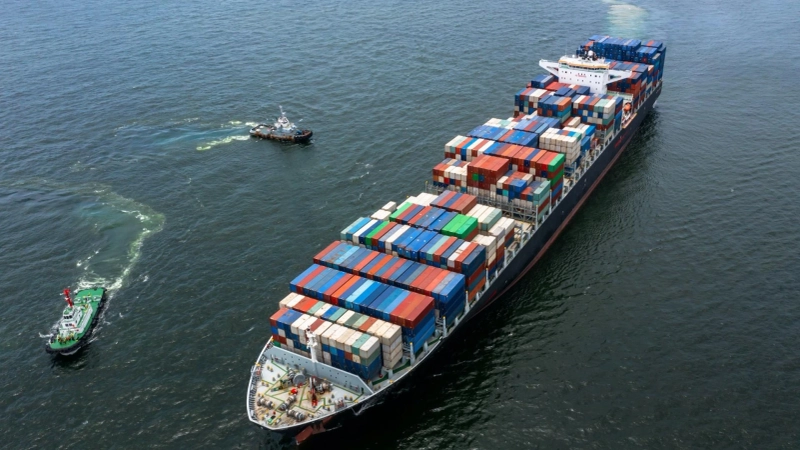Logistics and transportation are two closely related concepts in the field of supply chain management, but they have distinct meanings and roles within the overall process. In this article, we will explore the difference between logistics and transportation, shedding light on their definitions, functions, and how they contribute to the efficient movement of goods.
Definition of Logistics:
Logistics encompasses the entire process of planning, implementing, and controlling the flow of goods and services from the point of origin to the point of consumption. It involves various activities, including procurement, inventory management, warehousing, packaging, order fulfillment, and distribution. Logistics aims to ensure that the right product is in the right place, at the right time, and in the right quantity. It involves coordinating and integrating these activities to optimize the overall supply chain and meet customer demands efficiently.
Definition of Transportation:
Transportation, on the other hand, refers to the physical movement of goods or people from one location to another. It is a subset of logistics and plays a crucial role in the execution of the supply chain. Transportation involves the actual movement of goods through different modes, such as road, rail, air, or sea. It focuses on the movement of products or raw materials from one point to another, ensuring that they reach their intended destination. Transportation can be further divided into various modes, each with its own unique characteristics and considerations.
Scope and Function of Logistics:
Logistics encompasses a broader scope than transportation. It includes not only the physical movement of goods but also the coordination and management of various activities that contribute to the efficient flow of goods. Logistics involves strategic planning, organizing, and controlling these activities to ensure that products are available at the right place and time. It considers factors such as inventory management, demand forecasting, packaging, order processing, and customer service. Logistics aims to optimize the entire supply chain, from sourcing raw materials to delivering finished products to end customers.
Scope and Function of Transportation:
Transportation, as a subset of logistics, focuses specifically on the physical movement of goods. Its primary function is to transport products from one location to another using different modes of transportation. Transportation involves selecting the most appropriate mode based on factors such as cost, distance, speed, nature of goods, and infrastructure availability. It deals with aspects such as route planning, carrier selection, freight management, and tracking of shipments. The efficiency and reliability of transportation directly impact the overall effectiveness of logistics operations.
Integration and Interdependency:
While logistics and transportation are distinct concepts, they are closely interconnected and interdependent. Transportation is a key component of logistics, as it facilitates the physical movement of goods. Logistics, on the other hand, encompasses transportation as one of its essential functions. Effective coordination and integration between logistics and transportation ensure the smooth flow of goods throughout the supply chain. Logistics considers transportation as a critical element in its planning and execution to optimize the overall supply chain operations.
Relationship with Other Supply Chain Functions:
Logistics and transportation work in conjunction with other supply chain functions to achieve overall operational efficiency. Logistics interacts with procurement to ensure timely sourcing of materials, with inventory management to maintain optimal stock levels, and with warehousing to coordinate storage and distribution. Transportation collaborates with logistics to determine the most efficient routes, modes, and carriers for the movement of goods. It also interfaces with order management and customer service to provide accurate tracking information and meet delivery expectations.
Focus on Value Addition:
Logistics and transportation both aim to add value to the supply chain by enhancing customer satisfaction and optimizing operational efficiency. Logistics focuses on value-added activities such as demand forecasting, inventory optimization, and order fulfillment, which contribute to improved customer service and reduced costs. Transportation plays a critical role in timely product delivery, ensuring that goods reach customers in a timely manner, thereby enhancing customer satisfaction. By effectively managing logistics and transportation, businesses can achieve cost savings, improved order fulfillment, reduced lead times, and increased overall competitiveness.
Key Differences:
To summarize the difference between logistics and transportation:
Scope: Logistics has a broader scope, encompassing various activities such as procurement, inventory management, warehousing, packaging, and distribution. Transportation focuses solely on the physical movement of goods.
Function: Logistics involves the coordination and management of activities to optimize the flow of goods. Transportation is primarily concerned with the actual movement of goods from one location to another.
Interdependency: Transportation is a key component of logistics, as it enables the physical movement of goods. Logistics incorporates transportation as one of its essential functions.
Integration: Logistics and transportation work together with other supply chain functions to achieve operational efficiency and customer satisfaction.
Value Addition: Both logistics and transportation aim to add value to the supply chain by improving customer service, reducing costs, and optimizing operational processes.
Conclusion:
In conclusion, while logistics and transportation are interrelated, they have distinct meanings and functions within the supply chain. Logistics encompasses a broader range of activities, focusing on the coordination and management of various functions to ensure the efficient flow of goods. Transportation, as a subset of logistics, specifically deals with the physical movement of goods between different locations. Understanding the difference between logistics and transportation is crucial for businesses to effectively plan and execute their supply chain operations, optimizing the movement of goods and achieving overall operational excellence. By integrating logistics and transportation strategies, organizations can enhance customer satisfaction, streamline processes, and gain a competitive edge in the market.
Website:- https://pmlogisticsservices.com/
Get Map: https://goo.gl/maps/pxK2MPViGovHopMx9?coh=178572&entry=tt
Contact Information
PM Logistics Services
Address:- 1115 W Poinsett St Suite D, Greer, SC 29650
Phone:- 877-559-7018
Email:- pmls@pmlogisticsservices.com
External Links:-


